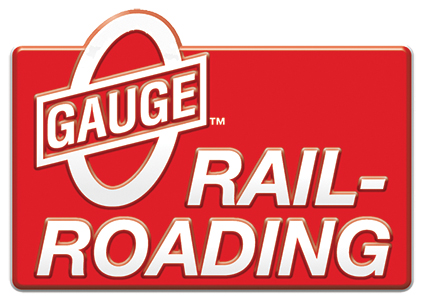As I try to decide what 3R track type is best for me I am drawn many different ways. I want reliable operation, the thought of a Brass Steam Loco de-railing and taking a dive gives me cold sweats. But I would like it to look scale. Since I don't (presently?) plan to run tinplate, probably don't need to accommodate super big flanges. Although all my items are about 35-15 years old, I noticed, just like everything else in 3R, there is no standardization. By this I mean the wheel profile on K-Line Passenger cars is different than Weaver Brass Steam Engines. For that matter the Drivers have a different Profile than the tender wheelsets.
In HO decisions were so much easier (NMRA Standards that manufactures follow). What code track. Since I liked reliable operation and reasonable cost I used Code 100 (Atlas Flex), was the standard back then. Now a days might use Code 83.
Fastrack is "off the table" (pun intended). Perfect for quick set-up on the floor. I just don't like the look of track with plastic roadbed, nor want to deal with the noise it produces.
So started to experiment with some used Atlas 3R track (a natural extension from HO). Well I don't really like it. The joiners don't work as well as they do in HO. Bending it isn't as easy as HO (go figure) and the rails are HUGE. O equivalent to Code 100 would be Code 181. Probably the most important fact, the cost is astronomical (about $1 per inch).
I have considered 2R Code 145 with an added center conductor, but concerned about the reliability.
I like the look of Super O, but finding nice used, and the fact it only came stock in O36 (yes I know it can be reworked), really isn't a practical solution to me.
Reading lots of posts and talking to others Gargraves seems to be the choice. The good, practical, reliable, relatively cost effective solution. I am a car guy, and at one point owned a Chrysler Minivan. However like that, though it got the job done, the look just doesn't get me excited. Unlike other cars I have owned, never had anyone come up and say cool car!
Anyhow a long path to get here but...thinking about the possibility of Gargraves Outer Rails with detailed plastic ties and a smaller center conductor. If I could get my act together on this, would others be interested?
I am a retired Mechanical Engineer and know how to do this. But don't want to burn up my retirement savings.
Please if you read this, just post a yes or no. So I know. If you have suggestions for the center conductor, let me know.
If there seems to be interest I will pursue this further. I can make some 3D drawings to show what it would look like. Thank you!































